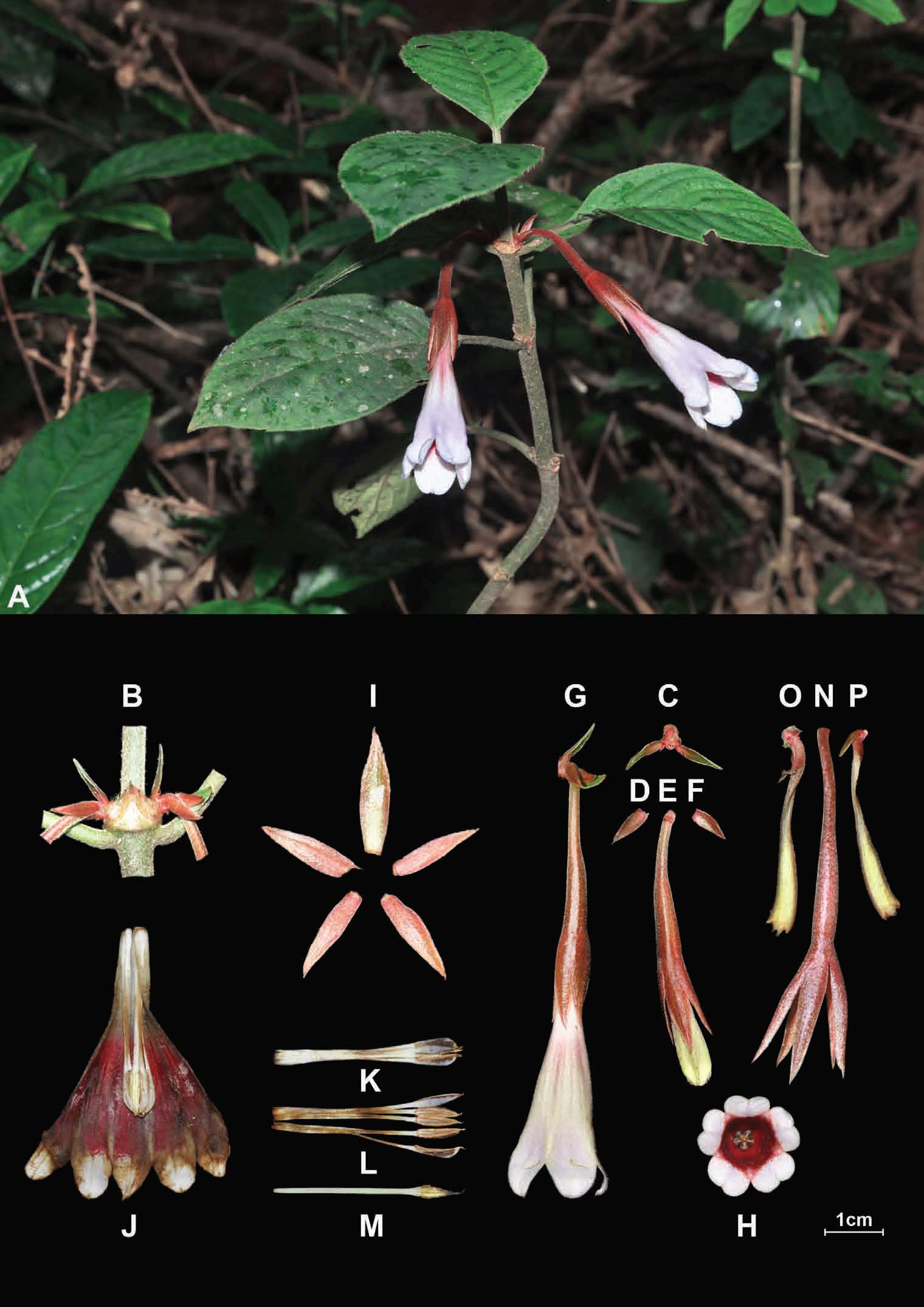
During November to December in 2014, a team from Xishuangbanna Tropical botanical garden (XTBG) and Kunming Institute of botany (KIB), in collaboration with the Forest research Institute of Myanmar, conducted field work in northern Myanmar to survey plant diversity. During field work, specimens of Acranthera were found in Putao, Kachin state.Interestingly, the genus has never been reported from Myanmar before.
Based on a detailed examination of the morphological and anatomical characters of our material and possible closely similar species, the researchers regarded that the specimens collected in Myanmar belong to a species new to science. They named the species as Acranthera burmanica Y. H. Tan & B. Yang, sp. nov. , then described and illustrated it.
Acranthera burmanica is similar to A. sinensis C. Y. Wu (1957:295), differing from the latter by its stem and branches densely strigose throughout (vs. glabrescent when aged); ovate to ovate-lanceolate leaves (vs. elliptic or obovate); calyx distinctly shorter than corolla tube (vs. equal to corolla tube), calyx lobes lanceolate (vs. linear-lanceolate), apex attenuate (vs. acuminate); stipules triangular, apex acute not cuspidate (vs. broadly ovate to triangular, glabrescent, cuspidate); lower part of filaments connate into a tube (vs. free).
Acranthera burmanica is endemic to Myanmar and known from Kachin State, Putao, where it grows in the understory in tropical rain forests and tropical mountain forests, at an elevation of ca. 900–1500 m.
The new species has been published online in Phytotaxa.

Acranthera burmanica A. Habit. B. Stipule and Flower branch. C. Peduncle. D, F. Bracts. E. Flower bud. G. Inforescences. G. Corolla (adaxial view). I. Calyx. J. Opened corolla. K–L. Stamens. M. Pistil. N–P. Ovary portion. Photographed by Yun-Hong Tan.
| Menglun, Mengla, Yunnan 666303, China. Copyright XTBG 2005-2011 Powered by XTBG Information Center |